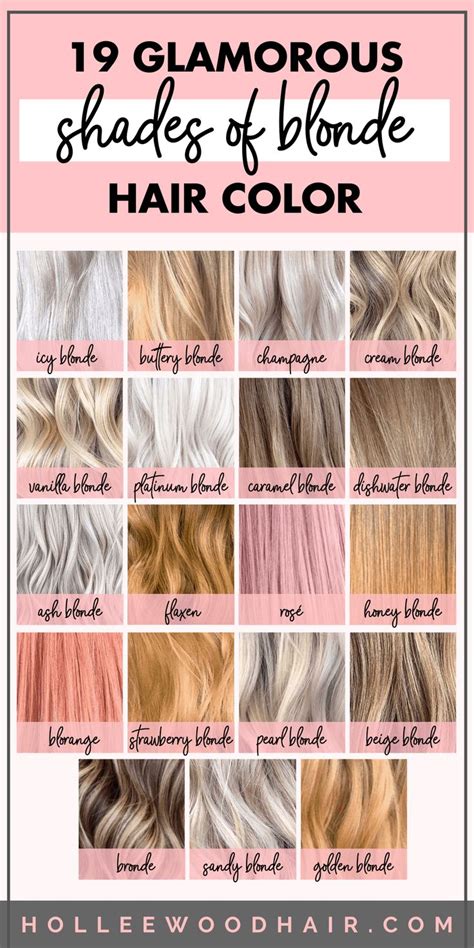Introduction

Ombre blonde is a hair coloring technique that creates a gradual transition from dark roots to lighter tips. This captivating look has been gracing the heads of countless celebrities and influencers alike, becoming a symbol of effortless style and sophistication. Whether you’re considering taking the plunge into the ombre world or simply want to delve deeper into its nuances, this comprehensive guide will provide you with everything you need to know.
Types of Ombre Blonde
The versatility of ombre blonde allows for endless variations, catering to diverse preferences and hair types. Here are some popular options:
- Rooty Ombre: This subtle approach retains darker roots, blending seamlessly into lighter shades towards the tips.
- Classic Ombre: A harmonious transition from dark roots to progressively lighter shades, creating a natural sun-kissed effect.
- Low Ombre: The transition begins lower on the hair shaft, resulting in a more concentrated blonde effect at the ends.
- Reverse Ombre: A daring twist where the roots are bleached blonde while the rest of the hair remains darker.
- Hidden Ombre: A subtle variation where the ombre effect is concealed when hair is worn down, but revealed when pulled up.
- Low Maintenance: Ombre blonde minimizes the need for frequent touch-ups compared to full-head bleach, as the dark roots provide a buffer zone.
- Versatility: Suitable for all hair types and complexions, ombre blonde can be tailored to complement individual styles and preferences.
- Dimension and Volume: The contrasting shades add depth and dimension, giving the illusion of thicker, fuller hair.
- Timeless Appeal: Ombre blonde has stood the test of time, remaining a chic and sophisticated choice for those seeking a low-key yet striking look.
1. Consultation: Determine your desired shade and transition point with a professional stylist to ensure the result aligns with your vision.
2. Bleaching: The first step involves lightening the hair to create the base for the ombre effect.
3. Toning: Toner is applied to neutralize unwanted tones and refine the blonde shade.
4. Blending: The stylist will blend the transition zones using various techniques, such as backcombing or feathering.
Effective Strategies
- Color Placement: The placement of color plays a crucial role in the overall look. Consider your face shape and skin tone when determining the starting and ending points of the ombre.
- Blending Techniques: Blending is essential to achieve a seamless transition. Invest in professional techniques to avoid harsh lines or unevenness.
- Aftercare: Use sulfate-free shampoos, deep conditioners, and color-protecting products to maintain the vibrancy and health of your hair.
Why Ombre Blonde Matters
- Expression of Individuality: Ombre blonde allows you to express your personality and embrace unique hair color combinations.
- Enhances Facial Features: The contrasting shades can accentuate bone structure and highlight certain features.
- Trendy and Desirable: Ombre blonde continues to reign as a coveted hair trend, garnering admiration and envy alike.
Materials:
- Bleach powder
- Developer
- Toner
- Mixing bowl and brush
- Gloves
- Cape or towel
Procedure:
1. Protection: Don gloves and drape a cape over your shoulders.
2. Sectioning: Divide hair into sections to work on one segment at a time.
3. Bleaching: Mix bleach powder and developer according to packaging instructions and apply to the hair.
4. Timing: Monitor the bleaching process to achieve the desired level of lightness.
5. Rinsing: Rinse out the bleach thoroughly and shampoo the hair.
6. Toning: Apply toner to the bleached hair and let it process for the recommended time.
7. Blending: Using a brush or comb, blend the transition zones to remove any harsh lines.
8. Finishing: Rinse out the toner and style as desired.
Table 1: Bleaching Times by Hair Level
| Hair Level | Time |
|—|—|—|
| Level 1 (black) | 45-60 minutes |
| Level 2 (dark brown) | 30-45 minutes |
| Level 3 (medium brown) | 20-30 minutes |
| Level 4 (light brown) | 15-20 minutes |
Table 2: Toner Chart
| Tone | Recommended Base | Result |
|---|---|---|
| Cool | Level 9 (very light blonde) | Ashy, platinum blonde |
| Warm | Level 7-8 (blonde) | Golden, buttery blonde |
| Neutral | Level 8 (light blonde) | Beige, natural-looking blonde |
Table 3: Aftercare Tips
| Tip | Purpose |
|—|—|—|
| Use sulfate-free shampoos | Gently cleanse without stripping color |
| Deep condition regularly | Repair and hydrate damaged hair |
| Apply color-protecting products | Prevent fading and maintain vibrancy |
| Avoid heat styling | Excessive heat can weaken hair |
| Get regular trims | Remove split ends and promote healthy hair growth |
Table 4: Ombre Blonde Inspirations
| Type | Image |
|—|—|—|
| Rooty Ombre | [Image of rooty ombre hair] |
| Classic Ombre | [Image of classic ombre hair] |
| Low Ombre | [Image of low ombre hair] |
| Reverse Ombre | [Image of reverse ombre hair] |
| Hidden Ombre | [Image of hidden ombre hair] |
Conclusion
Ombre blonde is a versatile and alluring hair coloring technique that caters to diverse styles and preferences. With proper consultation, execution, and aftercare, you can achieve the perfect ombre blonde that enhances your look and boosts your confidence. Embrace the beauty of ombre blonde and let your hair reflect your unique personality.
